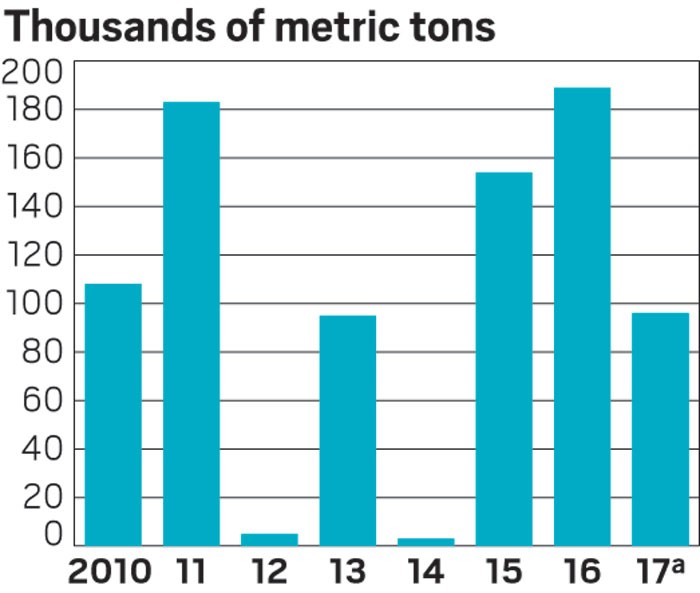Advertisement
Grab your lab coat. Let's get started
Welcome!
Welcome!
Create an account below to get 6 C&EN articles per month, receive newsletters and more - all free.
It seems this is your first time logging in online. Please enter the following information to continue.
As an ACS member you automatically get access to this site. All we need is few more details to create your reading experience.
Not you? Sign in with a different account.
Not you? Sign in with a different account.
ERROR 1
ERROR 1
ERROR 2
ERROR 2
ERROR 2
ERROR 2
ERROR 2
Password and Confirm password must match.
If you have an ACS member number, please enter it here so we can link this account to your membership. (optional)
ERROR 2
ACS values your privacy. By submitting your information, you are gaining access to C&EN and subscribing to our weekly newsletter. We use the information you provide to make your reading experience better, and we will never sell your data to third party members.
Catalysis
Turning down the temperature on ethylene production
Proof-of-concept electrochemical cell suggests a more selective, less energy-intensive route to ethylene from ethane
by Tien Nguyen
April 23, 2018

Among plastic precursors, ethylene is unrivaled in its demand. Industry produces over 140 million metric tons per year of the compound worldwide. Unfortunately, the amount of energy required to produce ethylene also is unmatched. Steam cracking, the method that makes the hydrocarbon, consumes more energy than any other process in the chemical industry. Manufacturers blast ethane with steam at a brutal 850 °C, recovering a 50% yield of ethylene after separating out other hydrocarbons, decomposed carbon, and hydrogen gas.
Now, researchers at Idaho National Laboratory led by Ting He and Dong Ding report an electrochemical method that makes ethylene with almost complete selectivity and at half the temperature (Energy Environ. Sci. 2018, DOI: 10.1039/c8ee00645h). The team demonstrated the process on a roughly four-gram-per-day scale, but they think that a scaled-up version, compared with steam cracking, would use 65% less energy and release 72% less carbon dioxide if powered by a conventional, fossil fuel-based electrical grid and up to 98% less CO2 if powered by renewable energy sources.
The cell sandwiches a 10-µm-thick film of a barium zirconate cerate electrolyte between a nickel anode and a perovskite-based cathode. The researchers apply a small voltage to the cell and heat it to 400 °C. Once ethane enters the cell, the nickel strips the compound of its protons to yield ethylene, and the perovskite forms hydrogen gas by combining electrons and the freed protons. Through their tests, the team found that the cells showed no sign of degradation after more than 90 hours of exposure to the elevated temperatures.
The most notable aspect of the approach is its ethylene selectivity compared with that of steam cracking, which produces mixtures, says Daniel J. Mindiola at the University of Pennsylvania. If scalable, the electrochemical approach would indeed save energy, he says, adding that powering the device with renewable energy sources would make it much more appealing.
Mindiola points out one caveat to the energy-saving claims: The researchers don’t take into account the energy costs of preparing the catalysts, which requires high temperatures around 1000 °C. Ding says the cells’ small scale made it difficult to incorporate the energy costs of catalyst preparation into their calculations, but he hopes to reevaluate the whole process when they scale up the cells. The researchers are discussing commercial development of their technology with partners in the petrochemical industry.
Ding thinks the electrochemical cells may be suited for use with renewable energy sources because the cells are mobile, meaning that they aren’t limited to using traditional grid electricity like many stationary manufacturing plants. The cells are also modular, which may allow manufacturers to stack them for larger scale syntheses. But Ding points out that their technology isn’t meant to replace steam cracking. Instead, it could offer a complementary way to make ethylene.



Join the conversation
Contact the reporter
Submit a Letter to the Editor for publication
Engage with us on Twitter